Think you need hours to get your home looking neat and organized? Think again. Sometimes, all it takes is five minutes and a simple trick to make a big difference. Whether you’re dealing with cluttered countertops, messy entryways, or an overflowing junk drawer, these lightning-fast fixes can help restore order in no time. Perfect for busy days or unexpected guests, these mini tasks deliver maximum impact with minimal effort. Here are 18 quick fixes that’ll tidy up your space in five minutes or less.
1. The One-Minute Rule
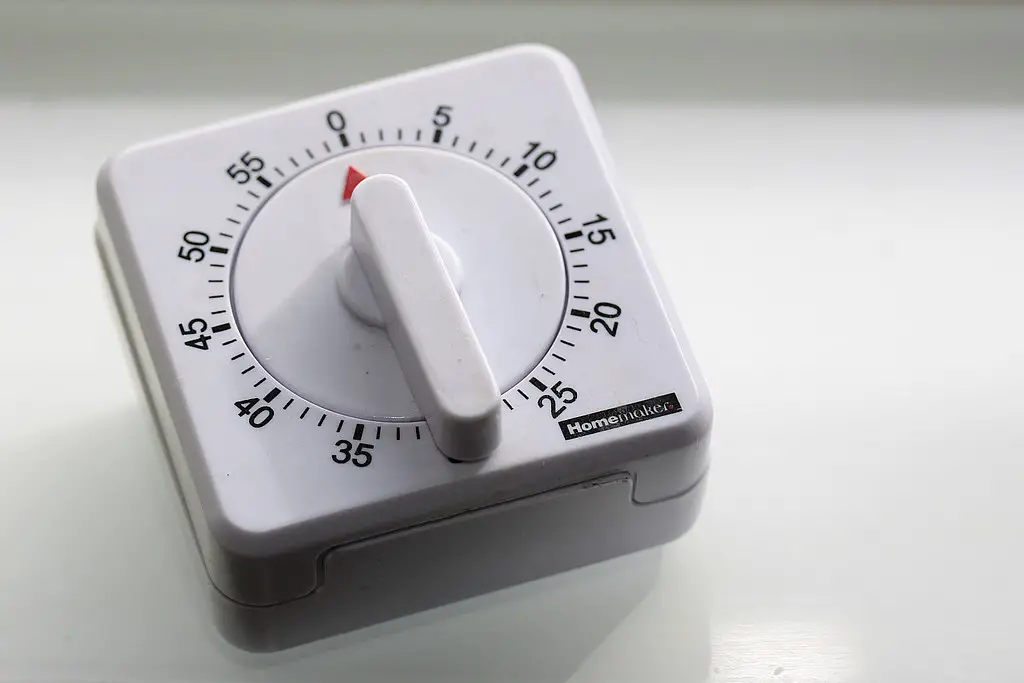
The one-minute rule, a concept popularized by productivity expert Gretchen Rubin, is a powerful tool for tackling everyday clutter. It states that if a task takes less than a minute to complete—such as putting away shoes, sorting mail, or wiping down a counter—you should do it immediately. As reported by Forbes, small daily habits like this create long-term organization and prevent messes from piling up. By following this rule, you eliminate small sources of clutter before they turn into overwhelming chores.
This hack is particularly useful for keeping high-traffic areas, like kitchens and entryways, tidy. When consistently applied, it transforms the way you maintain your home, creating a habit of instant action rather than procrastination. Over time, it also reduces the need for large-scale decluttering sessions. The cumulative effect of these quick actions results in a cleaner and more peaceful living environment.
2. The KonMari Method

Marie Kondo’s famous KonMari method encourages people to declutter by category rather than by room. The goal is to keep only the items that “spark joy” and let go of anything that does not serve a meaningful purpose. According to Forbes, this technique has helped millions worldwide simplify their homes and live more intentionally. It promotes mindfulness and gratitude while making decluttering feel like a positive, life-enhancing experience.
One of the key benefits of this method is its emotional impact, as it helps people appreciate what they own. It also prevents unnecessary repurchasing, as you become more aware of your possessions. Once applied successfully, it creates a lasting mindset shift toward minimalism and thoughtful consumption. The result is a home that feels lighter, more peaceful, and aligned with your personal values.
3. The 12-12-12 Rule

The 12-12-12 rule is a simple yet effective decluttering method: find 12 items to throw away, 12 items to donate, and 12 items to relocate. This structured approach prevents decision fatigue and keeps decluttering manageable. According to The New York Times, breaking tasks into smaller steps helps people stay motivated and prevents overwhelm. By incorporating this rule regularly, you can gradually maintain a clutter-free home without feeling burdened by the process.
The beauty of this method is its flexibility, as it can be done in any room and adjusted based on your needs. If you don’t have 12 items in each category, simply aim for smaller numbers to build momentum. Over time, these small sessions add up to a significant difference. The key is consistency—repeating this hack weekly ensures clutter doesn’t creep back into your space.
4. The Four-Box Method

The four-box method is an easy way to make decluttering decisions without feeling overwhelmed. Label four boxes as “Keep,” “Donate,” “Trash,” and “Relocate,” and sort items accordingly. Good Housekeeping states that categorization helps people make faster, more confident decisions while decluttering. This method forces you to assess each item’s value and purpose, helping eliminate unnecessary clutter.
A major advantage of this technique is its clarity, making it easier to separate sentimental attachments from practical needs. It also ensures that no unnecessary items remain hidden in drawers or closets. By using this method regularly, you can gradually reduce clutter and create a more functional living space. Over time, this approach makes maintaining an organized home much easier.
5. Create Drawer Dividers with Cardboard
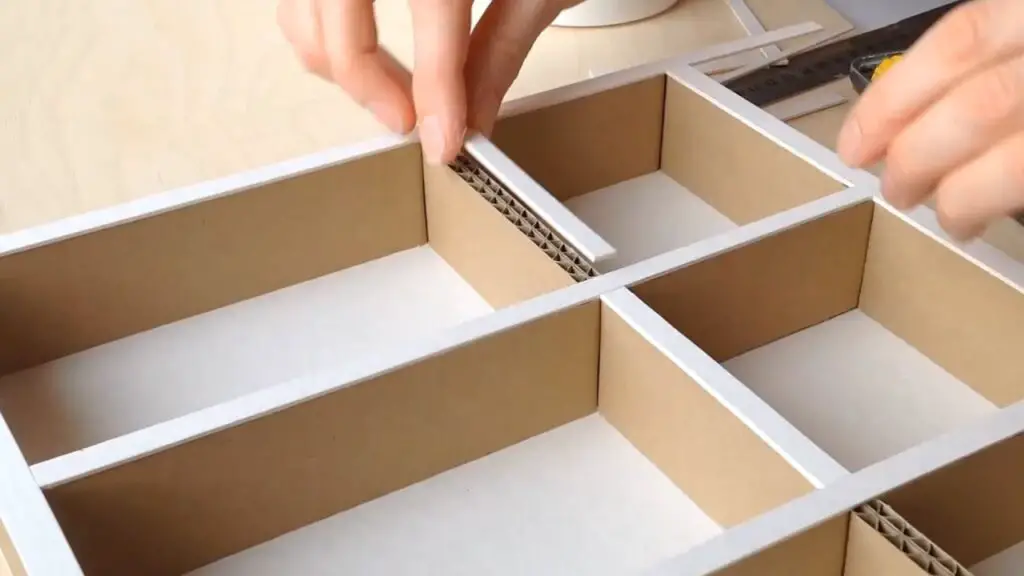
Cardboard is an incredibly versatile material for creating custom drawer dividers, and it’s easy to find at dollar stores. Simply cut cardboard to fit your drawers, then use it to create sections for organizing small items like office supplies, makeup, or kitchen utensils. This low-cost solution is a quick way to keep drawers from becoming a jumbled mess. By dividing your drawer into sections, you’ll prevent clutter and make it easier to find what you need.
Cardboard dividers can also be used in storage bins to help separate and organize items in a more compact space. The beauty of cardboard is that it’s customizable and can be cut to fit any drawer or container size. This affordable hack can make a significant impact on the organization of your home without the need for expensive pre-made dividers.
6. Use Tension Rods to Create Extra Space
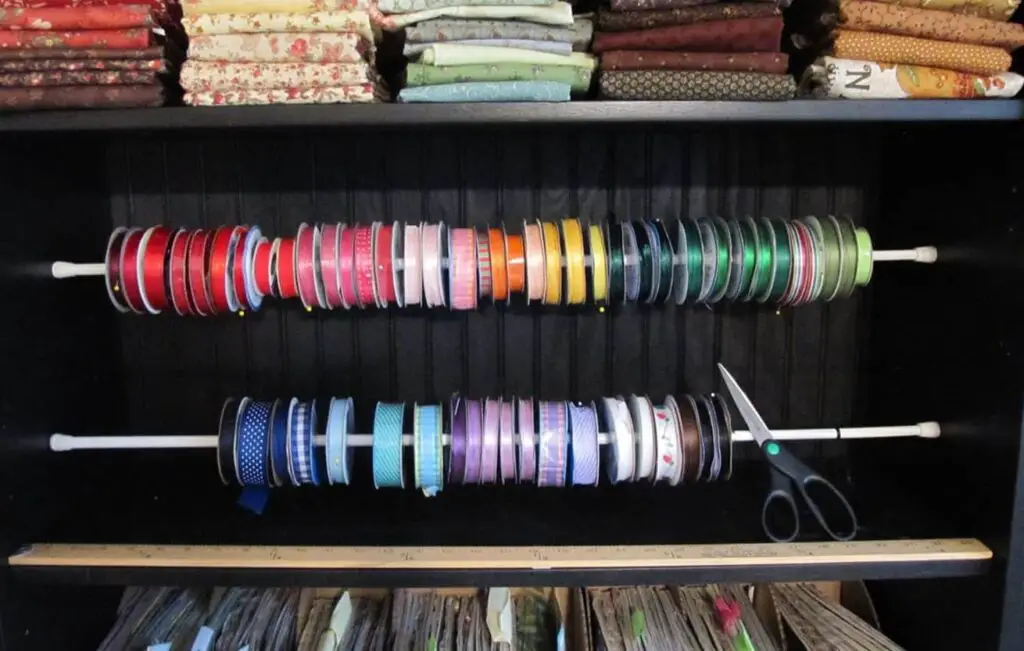
Tension rods, available at most dollar stores, are a simple yet effective tool for creating extra storage in your home. They can be used in under-sink areas, where you can hang cleaning products, spray bottles, or even small kitchen items. Tension rods are adjustable, making them easy to install and reposition as needed. This solution helps maximize your space and keeps things off countertops, reducing clutter in busy areas like kitchens or bathrooms.
Tension rods can also be used in cabinets to separate baking sheets, cutting boards, or pots and pans. By creating additional levels of storage, you can maximize your space without making any permanent changes. This hack helps keep your kitchen or bathroom organized while providing easy access to everyday items.
7. Maximize Vertical Space with Wall-Mounted Baskets
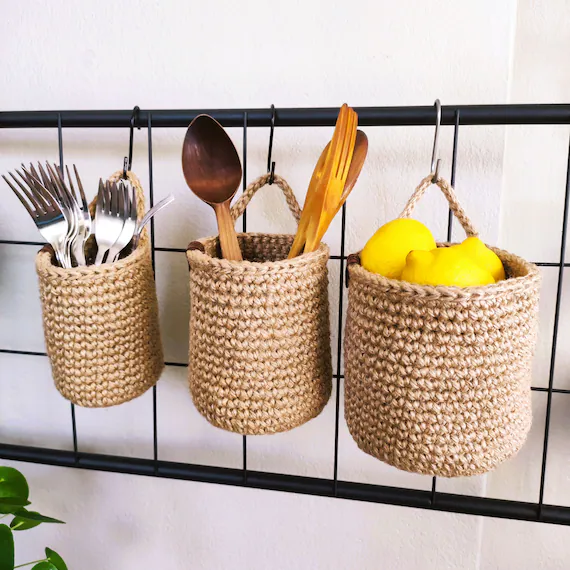
Wall-mounted baskets are a clever way to use vertical space for storage. These baskets can be mounted in hallways, kitchens, or bathrooms to hold everything from mail to toiletries. They help you keep smaller items organized and off countertops, providing an efficient use of vertical space. The baskets can be used to hold frequently accessed items, ensuring they stay within easy reach while maintaining a tidy space.
In kitchens, wall-mounted baskets can store produce, spices, or snack bags, freeing up space in cabinets and drawers. In bathrooms, they can hold toiletries or cleaning supplies, making them accessible without taking up valuable shelf space. Wall-mounted baskets are a simple, effective solution for organizing and decluttering high-traffic areas in your home.
8. Store Cleaning Supplies in a Caddy

A cleaning caddy from a dollar store is an ideal way to keep all your cleaning supplies in one place. You can store your cleaning solutions, scrubbers, and cloths in the caddy and easily carry it from room to room as you clean. This solution ensures that you have everything you need within arm’s reach, making cleaning tasks more efficient. By keeping all your supplies organized in one caddy, you reduce clutter and create a designated spot for everything.
A caddy is also useful for organizing your cleaning products in cabinets or closets. Instead of having bottles and cloths scattered throughout, you can store them in one convenient place. This simple tool helps maintain an organized cleaning area and makes it easier to tackle household chores without wasting time searching for products.
9. Use Dollar Store Shoe Racks for Closet Organization
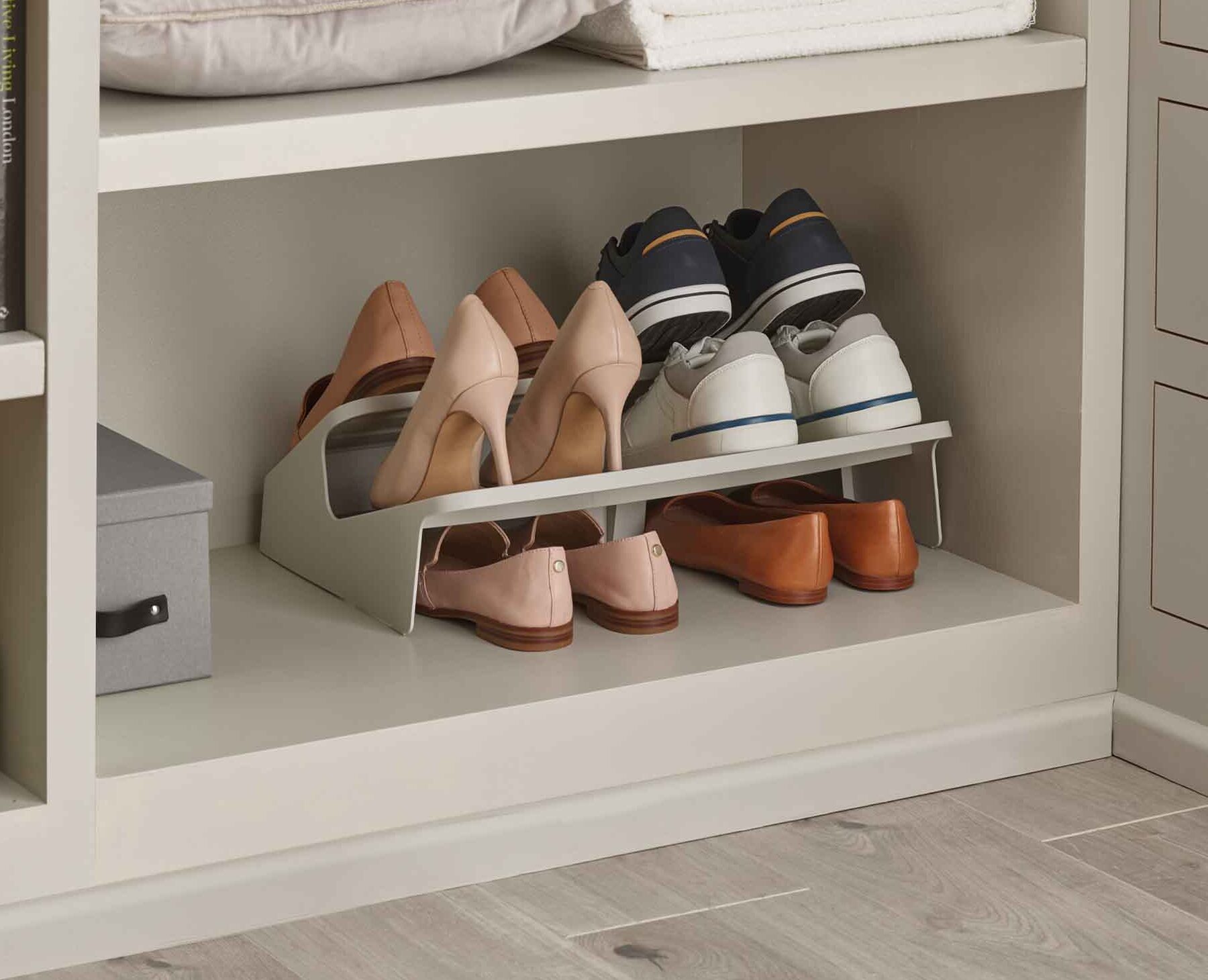
Dollar store shoe racks are a great solution for organizing footwear in your closet. They are often compact and can be placed inside closets or at the entryway, helping to keep shoes neatly stored and off the floor. By using a shoe rack, you can avoid the pile of shoes that typically accumulates near the door, and you’ll be able to easily access your shoes when you need them. With multiple tiers, shoe racks can accommodate a large number of shoes without taking up too much space.
If you have a larger shoe collection, you can purchase multiple racks to create a customized shoe storage system. You can also use shoe racks in other areas of the home, such as the garage, laundry room, or mudroom, to store shoes, boots, or even cleaning supplies. This low-cost organizational tool is an easy way to keep your home tidy and free of shoe clutter.
10. Organize Cords with Binder Clips
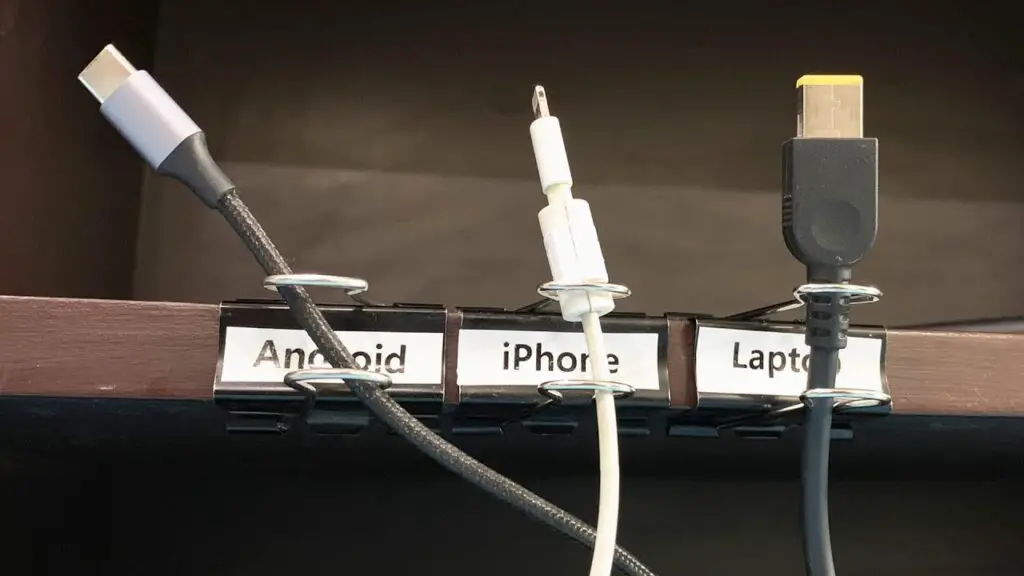
Binder clips, available at most dollar stores, are a great way to manage and organize cords around the house. You can use them to keep phone chargers, extension cords, or cables neatly bundled and easy to access. Simply clip the cords together at the base and attach them to the edge of a desk, shelf, or side table. This simple hack prevents cords from tangling and makes it easy to identify the one you need when you’re looking for it.
In addition to their practical use, binder clips can be an inexpensive and space-saving solution for organizing cables in drawers or storage boxes. You can attach a few clips to the back of a desk to keep wires from hanging down, or use them in drawers to organize power strips and cords. This cheap, quick fix ensures you won’t have to deal with messy cords again.
11. Repurpose Plastic Jars for Small Item Storage

Plastic jars, often found at dollar stores, can be repurposed for storing small items around your home. These jars are perfect for organizing office supplies, like paper clips, thumbtacks, or rubber bands. You can also use them in the kitchen to store spices, nuts, or dried fruits. Their transparent design makes it easy to see what’s inside, which helps you avoid having to dig through a cluttered drawer or pantry.
These jars can also be used to store craft supplies, such as buttons, beads, or sewing materials. By grouping similar items together in these jars, you create a simple organizational system that works well in closets, cabinets, or drawers.
12. Use Clear Storage Bins
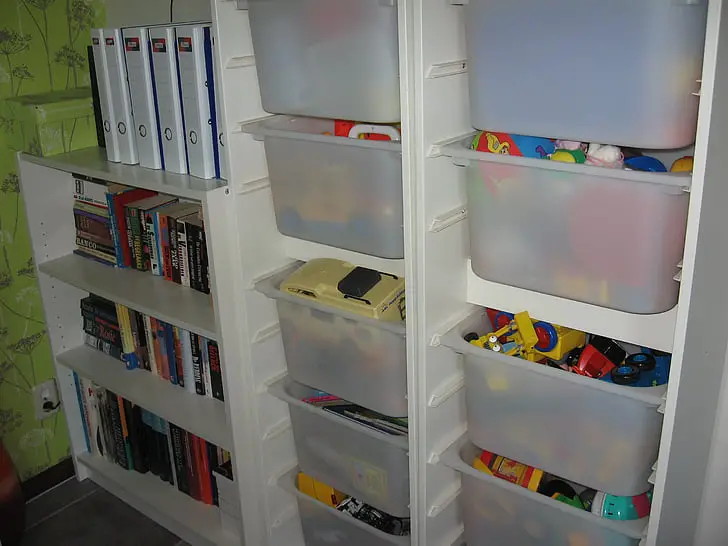
Clear storage bins make it easy to see what you own, reducing the chances of accumulating unnecessary duplicates. Unlike opaque containers, they provide instant visibility, helping you locate items quickly. This is especially helpful for seasonal decorations, craft supplies, and pantry goods. When everything is clearly stored, it minimizes the frustration of searching through cluttered cabinets and closets.
An organized storage system also prevents overbuying since you can immediately see what you already have. Labeling bins further enhances organization, making it even easier to maintain order. Storing similar items together in designated spaces prevents chaos from creeping back in. Ultimately, clear storage bins make tidiness effortless and sustainable.
13. Rotate Seasonal Items
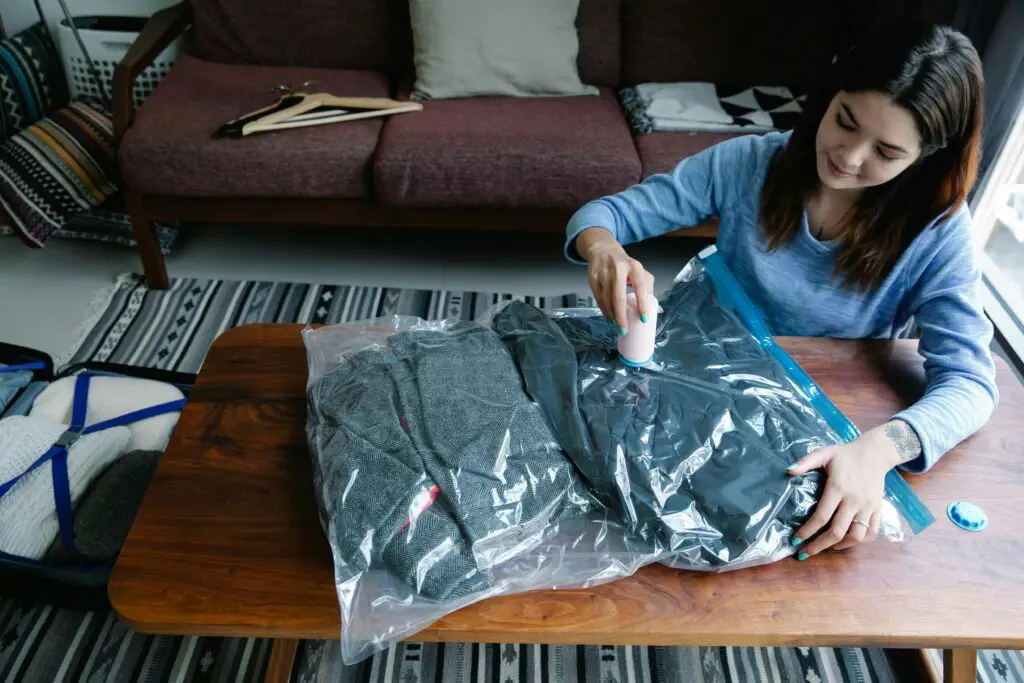
Seasonal decor, clothing, and accessories can take up unnecessary space when not in use. One of the best ways to keep your home feeling organized is to store off-season items in labeled bins, vacuum-sealed bags, or under-bed storage containers. This prevents closets and drawers from becoming overcrowded with items that aren’t immediately needed. Rotating seasonal belongings helps create a sense of order and allows for a fresh start each season. When only relevant items are readily accessible, getting dressed, decorating, or finding seasonal accessories becomes much easier.
Beyond just clothing and decorations, this method can also apply to kitchenware, bedding, and outdoor gear. For example, storing away summer patio cushions in the winter or holiday baking supplies after the season ends frees up valuable space. If storage space is limited, consider using vertical storage solutions like high shelves or overhead racks in garages or closets. By maintaining a rotation system, your home remains uncluttered, and every item has its designated time and place.
14. The “One In, One Out” Rule

To prevent clutter from building up again, follow the “one in, one out” rule. Every time you bring a new item into your home, remove an old one. This keeps belongings at a manageable level and prevents unnecessary accumulation. It’s particularly effective for clothing, kitchenware, and decorative items.
By sticking to this rule, you become more intentional about your purchases. It encourages mindful shopping and reduces impulse buying. Over time, you’ll find that your home stays organized without constant decluttering. This habit also fosters a sense of balance and control over your space.
15. Declutter Surfaces Daily
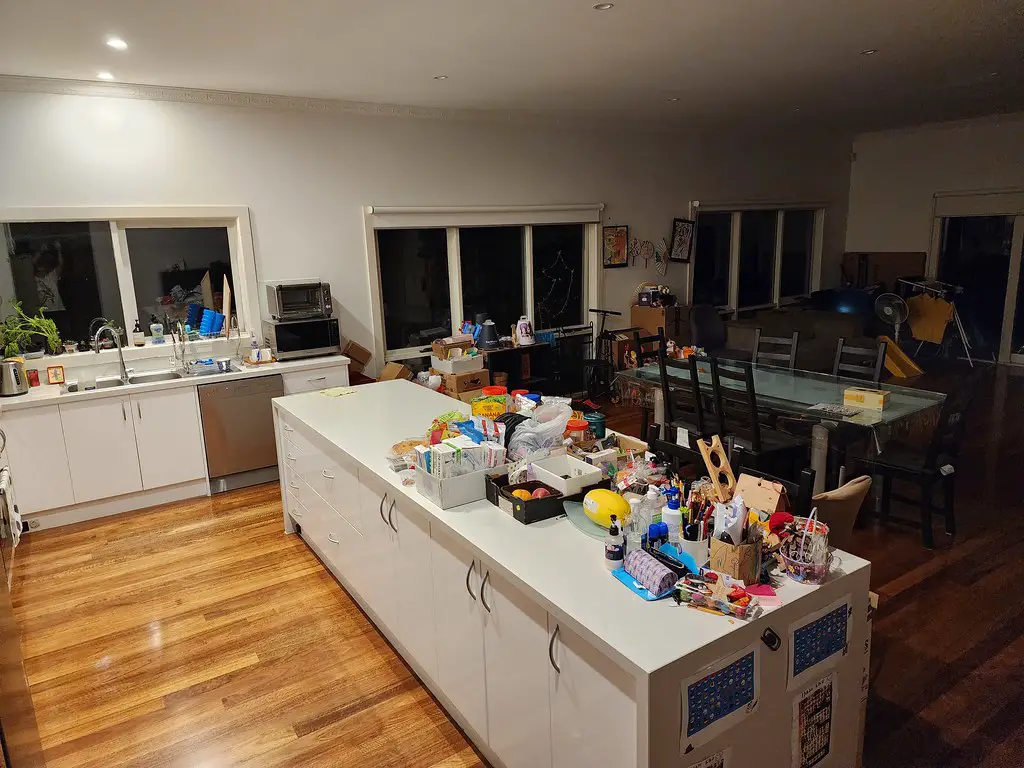
Flat surfaces tend to accumulate clutter quickly, making spaces look messy. To combat this, make it a habit to clear off tables, countertops, and nightstands daily. A clutter-free surface instantly improves a room’s appearance and functionality. Regularly resetting these spaces prevents clutter from becoming overwhelming.
Keeping surfaces clear also makes cleaning easier, as there’s less to move around. Decorative trays or small organizers can help contain frequently used items without creating visual chaos. This simple habit takes only a few minutes each day but has a big impact. Over time, maintaining tidy surfaces will become second nature.
16. Repurpose Unused Items
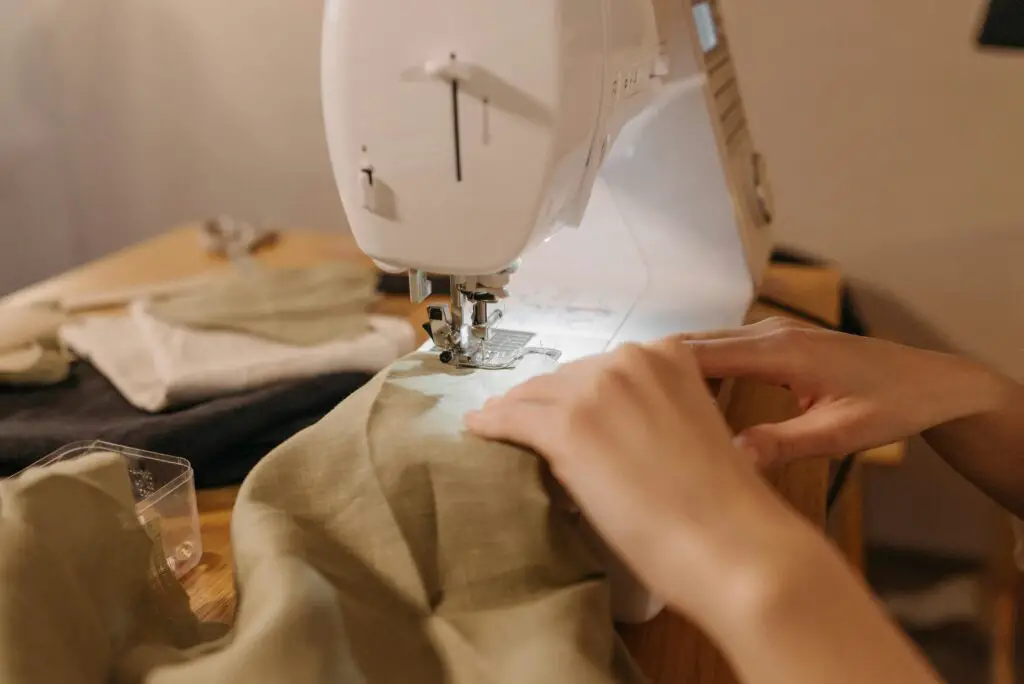
Instead of allowing unused or outdated items to collect dust, consider repurposing them in creative ways. An old ladder can become a decorative bookshelf, glass jars can be transformed into storage containers, and worn-out t-shirts can be cut into reusable cleaning rags. Repurposing items not only saves money but also prevents unnecessary waste. Upcycling is a great way to personalize your home while reducing clutter. Many people find that repurposing encourages them to think twice before throwing something away, fostering a more mindful approach to consumption.
This method is especially useful for sentimental items. If you have an old sweater from a loved one that you can’t bear to part with, consider turning it into a pillow cover or a tote bag. Repurposing not only helps declutter but also gives forgotten items new meaning and function. Additionally, reusing household items creatively can add charm and personality to your space, making your home feel more unique and customized. By embracing a mindset of resourcefulness, you’ll keep clutter at bay while giving new life to items you already own.
17. Create a Donation Station
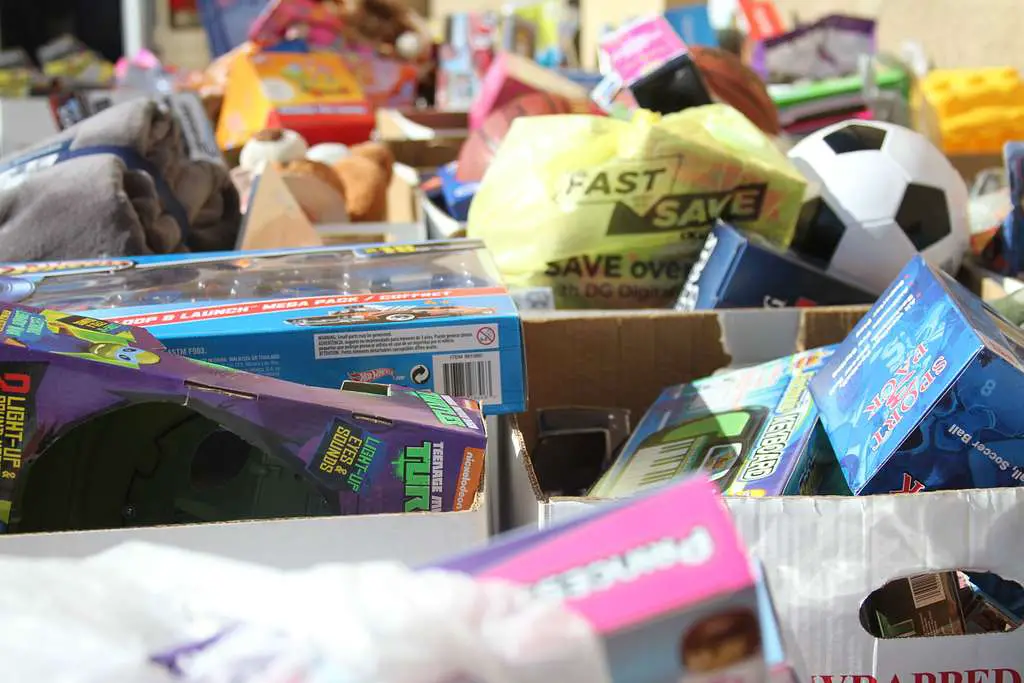
A clutter-free home requires a system for regularly letting go of items you no longer need. Setting up a dedicated “donation station” in your home—a bin, box, or bag placed in a closet or near an entryway—makes it easy to remove unnecessary items. Whenever you come across something you no longer use, place it in the bin instead of stuffing it back in a drawer. Having a designated donation area encourages frequent decluttering and reduces hesitation when it’s time to part with things. Once the bin is full, simply drop it off at a local charity or donation center.
Having a donation station also shifts your mindset toward minimalism. It helps you recognize that many items in your home serve no real purpose and could be better used by someone in need. It’s especially useful for clothing, books, kitchenware, and toys, which tend to accumulate quickly. Some people find it helpful to set a reminder to drop off donations once a month to keep the process consistent. By making decluttering an ongoing habit, you prevent clutter from creeping back into your home, creating a more peaceful and organized space.
18. Establish Daily Habits
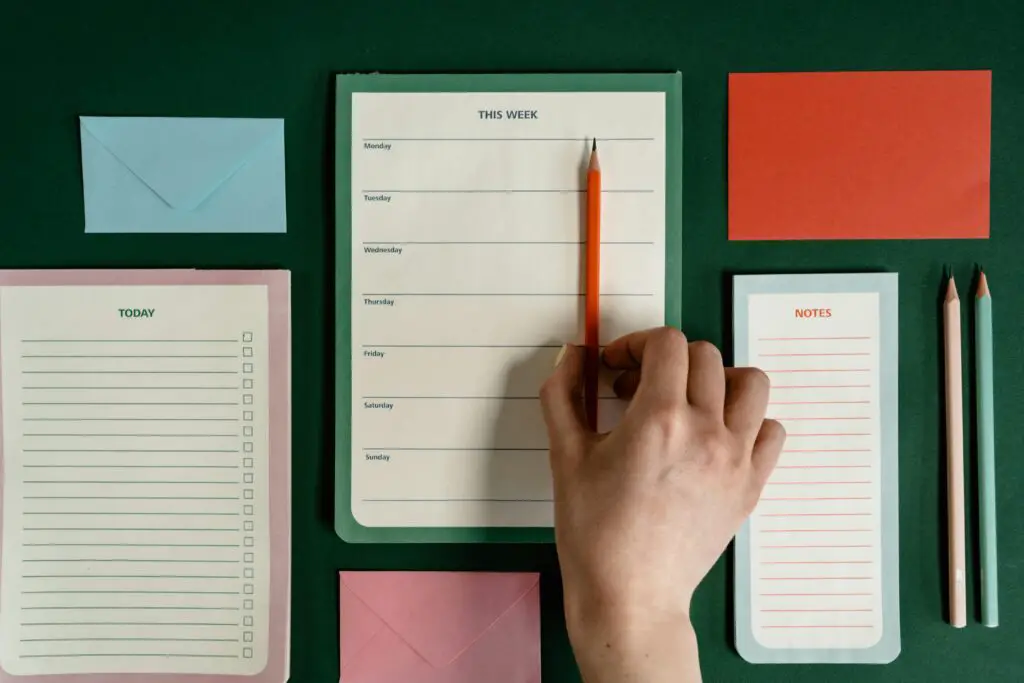
Decluttering isn’t just about one big clean-out—it’s about maintaining a daily routine that prevents clutter from building up again. Small habits, like putting things back where they belong, doing a five-minute tidy-up before bed, or sorting mail as soon as it arrives, can make a huge difference. Consistently tidying up a little each day reduces the need for massive decluttering sessions. When every household member participates in these small efforts, keeping the home organized becomes second nature.
One of the most effective habits is the “reset rule”—before leaving a room, take a moment to return everything to its proper place. Another great strategy is assigning a specific day for small decluttering tasks, such as “Tidy-Up Tuesdays” or “Minimalist Mondays.” These simple routines keep clutter from accumulating, ensuring that your home remains a stress-free environment. Over time, decluttering becomes less of a chore and more of a lifestyle, transforming not just your home but your overall sense of well-being.
